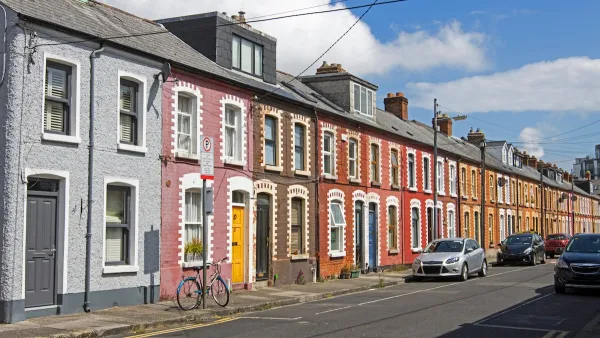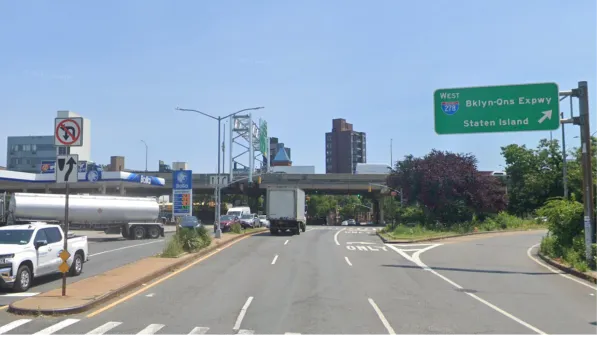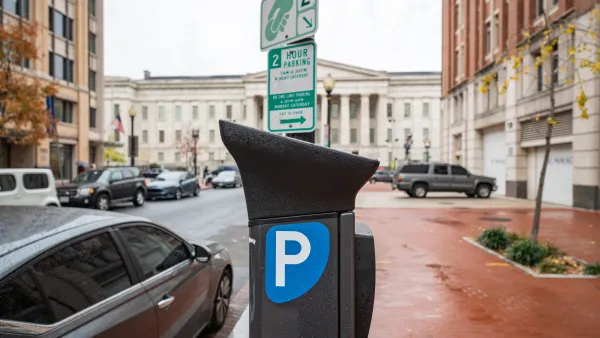Before moving to New York, I'd viewed street design through a fairly simple lens: narrow streets good, wide streets bad. By and large, I still hold this view. But after living here for a few months, I have learned that not all wide streets are equally bad. The wide roads of the South are generally terrible, but New York has made some of its wide streets a bit more pedestrian-friendly. To see why, go to Google Street View and examine three addresses: 5019 U.S. 23 in Chamblee, Georgia, 770 Eastern Parkway in Brooklyn's Crown Heights neighborhood, and 107-43 Queens Boulevard in my current Queens neighborhood of Forest Hills.
Before moving to New York, I'd viewed street design through a fairly simple lens: narrow streets good, wide streets bad. By and large, I still hold this view. But after living here for a few months, I have learned that not all wide streets are equally bad. The wide roads of the South are generally terrible, but New York has made some of its wide streets a bit more pedestrian-friendly. To see why, go to Google Street View and examine three addresses: 5019 U.S. 23 in Chamblee, Georgia, 770 Eastern Parkway in Brooklyn's Crown Heights neighborhood, and 107-43 Queens Boulevard in my current Queens neighborhood of Forest Hills.
First look at the Chamblee address. You will see a road that is seven or so lanes wide. There is no median, so the pedestrian has to cross seven lanes at once, obviously a death-defying act. Not surprisingly, pedestrian fatalities and injuries are fairly common on this road (known to everyone but Street View as "Buford Highway"). Other suburban Atlanta streets have medians that are so thin as to be barely usable: for example, if you go to Cobb Parkway and Galleria Parkway in Smyrna, you will see six lanes of traffic, then a median that appears to be about a foot or two wide, then four more lanes of traffic. Would you feel safe standing on that median?
Now go to the Queens Boulevard address. This street appears to be about twelve lanes. But having lived here for a few months, I can say with some certainty that it is less scary to cross. Why? Because every three or four lanes there is a median. So a pedestrian can walk across three lanes of one-way traffic to median A, then to median B, then finally to the other side of the street. Moreover, a couple of the outer lanes are taken up by on-street parking, which means that the pedestrian often has to cross only one or two lanes of speeding traffic at a time rather than three. Because each chunk of the trip is not so long, the street is not as intimidating as the Atlanta-area addresses discussed above.
Finally, go to the Eastern Parkway address. The street itself is twelve lanes wide: three lanes, then six lanes in the middle, and three lanes. But the northern and southern sets of lanes again have on-street parking, thus reducing the amount of car traffic that the pedestrian must contend with. And when the pedestrian crosses the first three lanes, he or she reaches not a tiny concrete median but a "pedestrian mall" (really a median wider than most sidewalks) which is lined with greenery and street trees. After the six-lane main stretch of Eastern Parkway, the pedestrian reaches another pedestrian mall. Thus, our pedestrian not only does not have to cross all twelve lanes at once, but gets to walk in an fairly appealing environment if he or she just wants to be on Eastern Parkway rather than being on both ends of that street. (On the other hand, Eastern Parkway's six-lane middle stretch might be scarier than any one part of Queens Boulevard).
In sum, both Eastern Parkway and Queens Boulevard are far more pedestrian-friendly than Buford Highway, despite being significantly wider. Why? Because both streets use on-street parking to reduce the number of lanes a pedestrian must cross, and use medians and greenery to ensure that pedestrians don't have to cross as many lanes at a time as on Buford Highway. In addition, Eastern Parkway uses its "pedestrian mall" to decorate the street and make it feel more welcoming than the concrete jungle of Queens Boulevard.

Analysis: Cybertruck Fatality Rate Far Exceeds That of Ford Pinto
The Tesla Cybertruck was recalled seven times last year.

National Parks Layoffs Will Cause Communities to Lose Billions
Thousands of essential park workers were laid off this week, just before the busy spring break season.

Retro-silient?: America’s First “Eco-burb,” The Woodlands Turns 50
A master-planned community north of Houston offers lessons on green infrastructure and resilient design, but falls short of its founder’s lofty affordability and walkability goals.

Test News Post 1
This is a summary

Analysis: Cybertruck Fatality Rate Far Exceeds That of Ford Pinto
The Tesla Cybertruck was recalled seven times last year.

Test News Headline 46
Test for the image on the front page.
Urban Design for Planners 1: Software Tools
This six-course series explores essential urban design concepts using open source software and equips planners with the tools they need to participate fully in the urban design process.
Planning for Universal Design
Learn the tools for implementing Universal Design in planning regulations.
EMC Planning Group, Inc.
Planetizen
Planetizen
Mpact (formerly Rail~Volution)
Great Falls Development Authority, Inc.
HUDs Office of Policy Development and Research
NYU Wagner Graduate School of Public Service





























